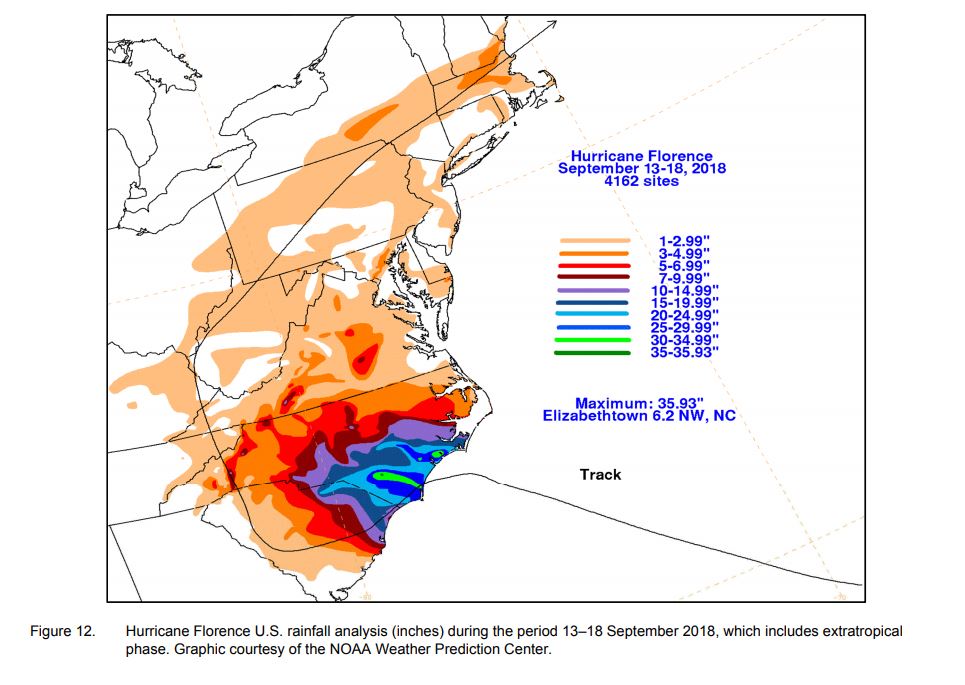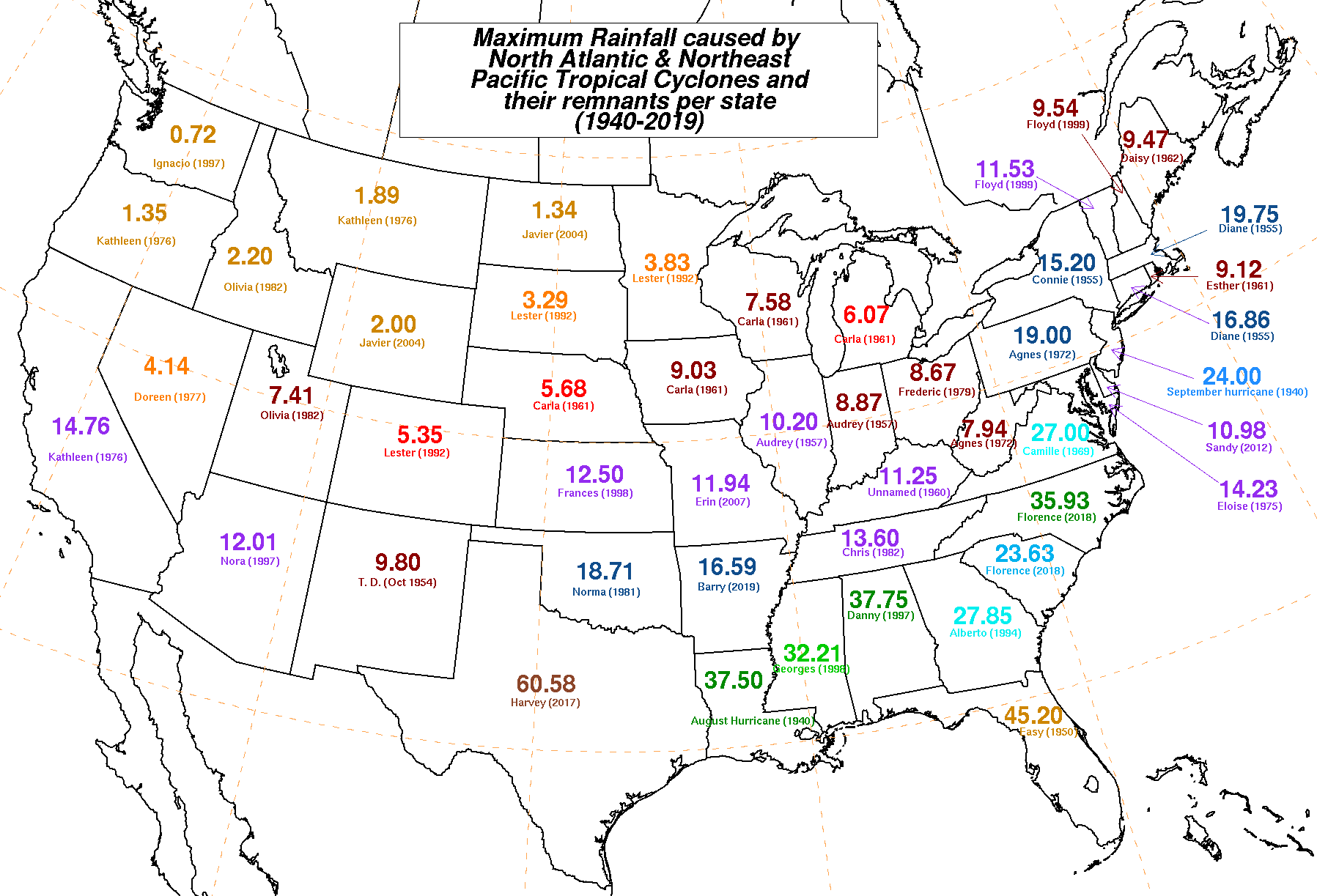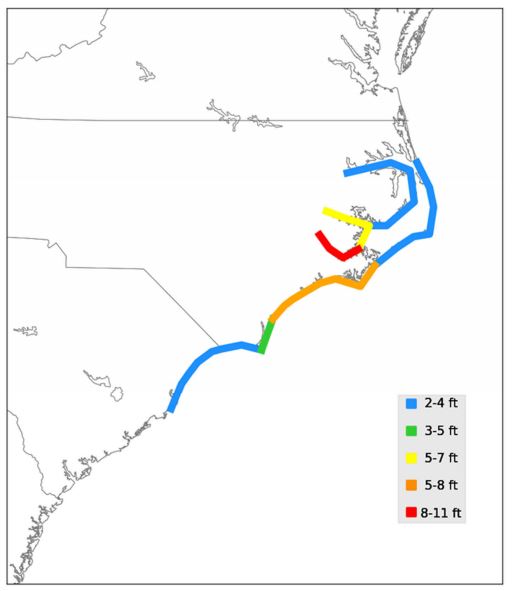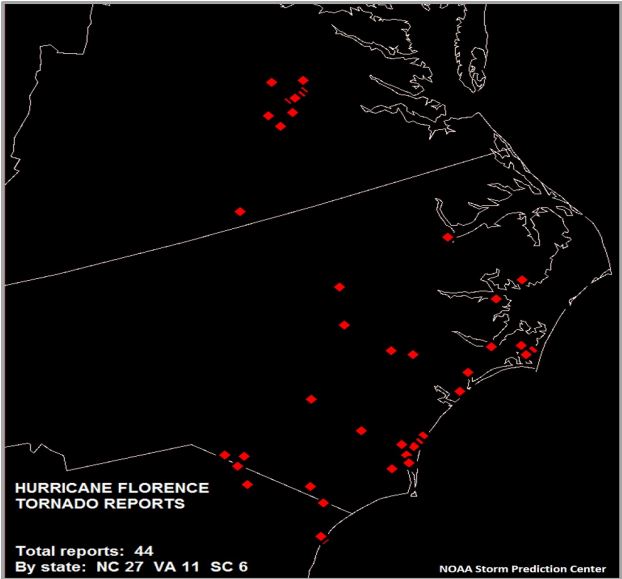Looking Back at Historic Hurricane Florence
Special Stories
14 Sep 2019 2:00 AM
One year ago, hurricane Florence made landfall on the North Carolina coast as a category 1 hurricane. The impacts would be felt for weeks after as historic flooding occurred.
https://youtu.be/7uB2CYy3kdg
On Thursday, Sept 12, 2019, North Carolina Governor Roy Cooper updated the state on the progress of the recovery as North Carolinians recover from three deadly storms in three years, including Hurricanes Florence, Matthew, and Dorian.
“North Carolina is working hard to make a difference for survivors of recent devastating hurricanes, but there is more work to do,” said Governor Cooper. “We will keep pushing to get critical funding out to those who need it and pushing for important changes from Congress that will cut red tape to make the process faster.”
 NHC tracked Florence from its beginnings as a tropical wave off of the African coast. The cyclone systematically charged across the Atlantic into early September 2018. Florence went through several cycles of rapid intensification and weakening. Despite reaching peak intensity 725 n mi east-southeast of Cape Fear, NC, cooler sea surface temperatures and wind shear allowed it to weaken as it approached land. Florence made landfall as a category 1 hurricane near Wrightsville Beach, NC on the morning of September 14, 2018. The slow forward speed kept heavy rain training over the same areas of the southeastern US. Flooding continued for days after landfall.
NHC tracked Florence from its beginnings as a tropical wave off of the African coast. The cyclone systematically charged across the Atlantic into early September 2018. Florence went through several cycles of rapid intensification and weakening. Despite reaching peak intensity 725 n mi east-southeast of Cape Fear, NC, cooler sea surface temperatures and wind shear allowed it to weaken as it approached land. Florence made landfall as a category 1 hurricane near Wrightsville Beach, NC on the morning of September 14, 2018. The slow forward speed kept heavy rain training over the same areas of the southeastern US. Flooding continued for days after landfall.

 Minimum Central Pressure: 937 millibars
Maximum Storm Surge Inundation Heights: 8 to 11 ft above ground level
Minimum Central Pressure: 937 millibars
Maximum Storm Surge Inundation Heights: 8 to 11 ft above ground level
 Tornadoes: 44 across 3 states
Tornadoes: 44 across 3 states
 Deaths: 22 direct (15 in NC, 4 in SC, 3 in VA), 30 indirect
Impacts outlined in an excerpt form the report:
Deaths: 22 direct (15 in NC, 4 in SC, 3 in VA), 30 indirect
Impacts outlined in an excerpt form the report:
Florence Recap:
The National Hurricane Center report on Hurricane Florence summarizes it's historic impacts. Florence peaked at category 4 strength, before making landfall in North Carolina as a category 1 hurricane. However, Florence's true power was evident in the freshwater flooding and storm surge impacts across the southeast. This single storm was responsible for 22 direct, and 30 indirect fatalities. The storm is estimated to have cost $24 billion in damage. NHC tracked Florence from its beginnings as a tropical wave off of the African coast. The cyclone systematically charged across the Atlantic into early September 2018. Florence went through several cycles of rapid intensification and weakening. Despite reaching peak intensity 725 n mi east-southeast of Cape Fear, NC, cooler sea surface temperatures and wind shear allowed it to weaken as it approached land. Florence made landfall as a category 1 hurricane near Wrightsville Beach, NC on the morning of September 14, 2018. The slow forward speed kept heavy rain training over the same areas of the southeastern US. Flooding continued for days after landfall.
NHC tracked Florence from its beginnings as a tropical wave off of the African coast. The cyclone systematically charged across the Atlantic into early September 2018. Florence went through several cycles of rapid intensification and weakening. Despite reaching peak intensity 725 n mi east-southeast of Cape Fear, NC, cooler sea surface temperatures and wind shear allowed it to weaken as it approached land. Florence made landfall as a category 1 hurricane near Wrightsville Beach, NC on the morning of September 14, 2018. The slow forward speed kept heavy rain training over the same areas of the southeastern US. Flooding continued for days after landfall.
Top Stats:
Rainfall: Florence produced a swath of rainfall over 30 inches. The highest rainfall total observed was 35.93" - a new state record for North Carolina
 Minimum Central Pressure: 937 millibars
Maximum Storm Surge Inundation Heights: 8 to 11 ft above ground level
Minimum Central Pressure: 937 millibars
Maximum Storm Surge Inundation Heights: 8 to 11 ft above ground level
 Tornadoes: 44 across 3 states
Tornadoes: 44 across 3 states
 Deaths: 22 direct (15 in NC, 4 in SC, 3 in VA), 30 indirect
Impacts outlined in an excerpt form the report:
Deaths: 22 direct (15 in NC, 4 in SC, 3 in VA), 30 indirect
Impacts outlined in an excerpt form the report:
"The NOAA National Centers for Environmental Information (NCEI) estimates that wind and water damage caused by Florence totaled approximately $24 billion. This makes Florence the ninth-most-destructive hurricane to affect the United States. Approximately 1.1 million customers lost power due to Florence’s effects, with 1 million customers having lost power in North Carolina and 100,000 customers experiencing power loss in South Carolina."
As North Carolina continues to recover from Hurricane Florence and Matthew in the 2016 and 2018 hurricane seasons, efforts to rebuild after Hurricane Dorian are also underway. Governor Roy Cooper has requested that President Trump issue a major disaster declaration for North Carolina following the effects of Hurricane Dorian.All Weather News
More